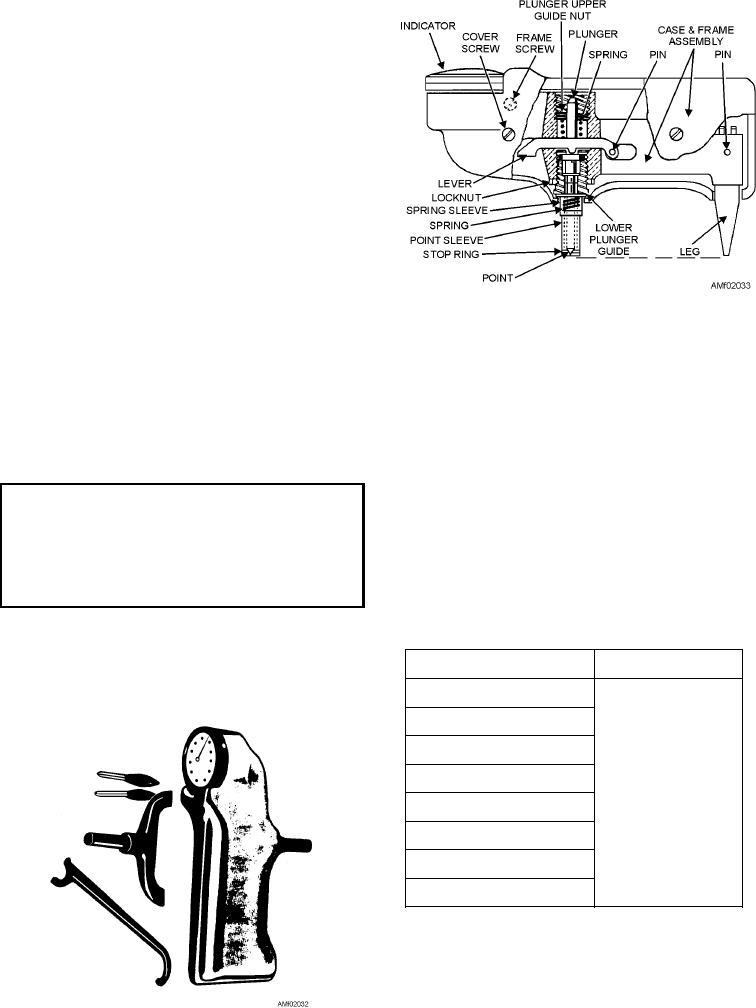
Barcol Tester
The Barcol hardness tester, shown in figure 2-32, is
a portable unit designed for testing aluminum alloys,
copper, brass, and other relatively soft materials.
Approximate range of the tester is 25 to 100 Brinell.
The unit can be used in any position and in any space
that will allow for the operator's hand. The hardness is
indicated on a dial conveniently divided in 100
graduations.
Figure 2-33 is a cutaway drawing of the tester,
showing the internal parts and their general
arrangement within the case.
The lower plunger guide and point are accurately
ground so that attention need be given only to the
proper position of the lower plunger guide within the
Figure 2-33.--Cutaway of Barcol tester.
frame to obtain accurate operation when a point is
replaced.
plane. For permanent testing of this type, the leg may be
The frame, into which the lower plunger guide and
removed and washers inserted, as shown in the
spring-tensioned plunger are screwed, holds the point
drawing. The point should always be perpendicular to
in the proper position. Adjustment of the plunger upper
the surface being tested.
guide nut, which regulates the spring tension, is made
when the instrument is calibrated at the factory.
The design of the Barcol tester is such that
operating experience is not necessary. It is only
necessary to exert a light pressure against the
instrument to drive the spring-loaded indenter into the
CAUTION
material to be tested. The hardness reading is instantly
The position of this nut should not be changed.
indicated on the dial. Several typical readings for
Any adjustment made to the plunger upper guide nut
aluminum alloys are listed in table 2-5. The harder the
will void the calibrated settings made at the factory.
material, the higher the Barcol number.
Table 2-5.--Typical Barcol Readings for Aluminum Alloys
The leg is set for testing surfaces that permit the
lower plunger guide and the leg plate to be on the same
Alloy and temper
Barcol number
plane. For testing rivets or other raised objects, a block
1100-0
35
may be placed under the leg plate to raise it to the same
3003-0
42
3003-1/2H
56
2024-0
60
5052-0
62
5052-1/2H
75
6061-T
78
2024-T
85
To prevent damage to the point, avoid sliding or
scraping when it is in contact with the material being
tested. If the point should become damaged, it must be
replaced with a new one. No attempt should be made to
grind the point.
Figure 2-32.--Barcol portable hardness tester.
2-38

